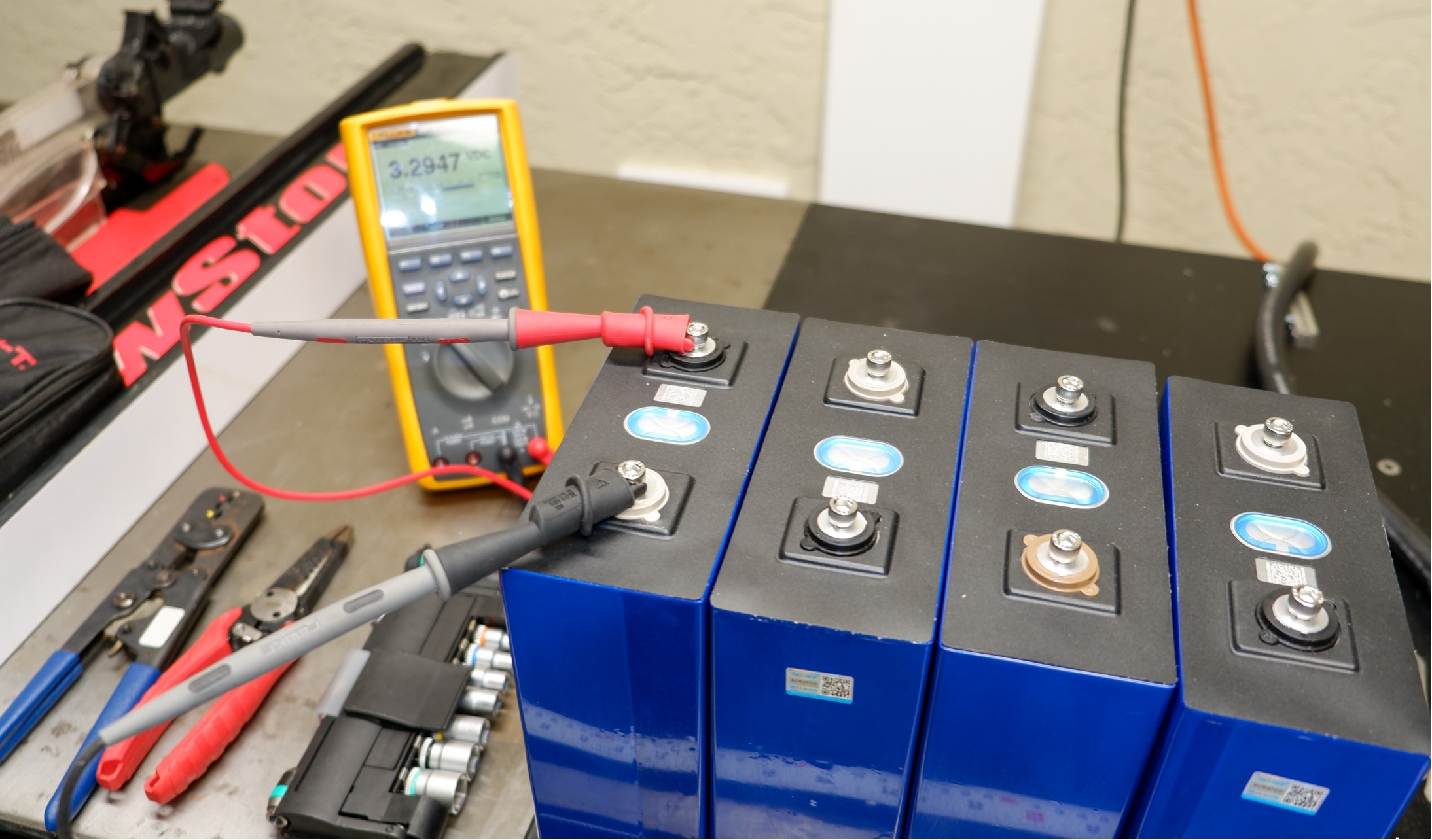Your Guide to LiFePO4 Battery DIY

What are the main reasons why people are reluctant to build DIY LifePO4 batteries for their van conversions?
We can think of a few:
- Fear of the unknown
- Lack of knowledge
- Concern that it’s not as good an off-the-shelf battery
- Scare stories of bad components
- Safety concerns
In this article, we attempt to tease this out a bit & hopefully give you some advice on some of the things you need to think about.
ABOUT THE PRICE OF LIFEPO4
We often hear the argument that “it’s crazy to consider LiFePO4 when Lead Acid is so much cheaper”, but actually if you were to match LiFePO4 performance with Lead Acid, you’d be surprised as to how many Lead Acid batteries you need to purchase to match the performance of a single LiFePO4 battery. Add in all the extra weight of having 3+ Lead Acid batteries in your van and you can see why LiFePO4 is so attractive!

DO YOU REALLY NEED TO KNOW WHAT YOU’RE DOING?
When you think of it, ten years ago it was so easy messing around with Lead Acid and AGM. So has technology advancement made it more complex for you?
In a nutshell: Yes
If you want to build your own LifePO4 battery you do need to know what you’re doing. You don’t need to be an expert, but there are some basics that you need to know.
Do you need to know about the chemistry? We see so many Youtubes where the person says “I’ve studied the chemistry” and you feel a bit lost.
In a nutshell: Not really. There are a few basics you need to know and that’s pretty much it.
FEAR OF THE UNKNOWN
This goes hand-in-hand with the lack of knowledge which is discussed next.
The thing is that you don’t know what you don’t know. For this reason, you would need to set aside a few hours to bring yourself to a level of knowledge that the fear of the unknown becomes manageable.

LACK OF KNOWLEDGE
Building a DIY battery is something that has tons of information on the web. The point is, there is a TON of help and advice out there.
So how do you go about acquiring the knowledge?
Our suggestion is to start with your friends Google, Youtube, Blogs, Forums & Facebook groups.
What do you need to be on the lookout for?These are the major topics you’d need to study:
- What goes into building a DIY LiFePO4 battery? That is to say, what components will you need to purchase?
- Top balancing brand new LifePO4 prismatic cells.
- Physical construction (assembly) of the battery and BMS, securing and compressing the cells.
- Attaching and testing the BMS.
- Finally – what tools will be needed?
And all your investigation you’ll be keeping safety as your top priority.
CONCERN THAT IT’S NOT AS GOOD AN OFF-THE-SHELF BATTERY
We think, actually we know, that there is no reason why your DIY battery should not be every bit as good as an off-the-shelf item, if not better!
We’re assuming you’re not going to skimp on quality parts. Your battery may look a little DIY but that doesn’t matter. What matters is how well it’s put together, what components were purchased and how you’ll be looking after the battery going forward & most importantly, does the battery give you what you need in your van? E.g. can you run your coffee machine, induction stove, TV, projector, PS4, etc..

SCARE STORIES OF BAD COMPONENTS
This is a valid concern. If you’re building a single 280ah battery you’ll be planning to make a single purchase of four cells from sellers.
How on earth do you tell one supplier from another? They all have beautiful pictures of pristine factories, people standing at testing equipment etc. Our recommendation for finding good sources for cells is to spend time reading reviews & on forums to shortlist some manufacturers that are tried and tested, which will be a safer bet in terms of the quality of the cells and stick to their more well-known manufacturers.
SAFETY CONCERNS
This is quite valid. And it covers a plethora of possibilities. However, anyone can learn how to safely work with 12v or 24v LiFePO4 batteries and effectively & safely build a battery system. Like with a lot in life, the unknowns are often the things that scare us the most, but with some good research, you can be clued up in electrical safety so that this is not an issue.
Remember that you are automatically working with Direct Current (DC), which by default is already safer than Alternating Current (AC).
Let us say: while we think you should be safety conscious it’s perfectly manageable.
What are the main safety concerns to bear in mind?
① The battery could explode and/or catch fire
② Construction hazards such as a tiny bit of molten metal flying into your eyes
③ Fires starting from shorts (this could happen with any battery chemistry though)
④ Leakage of the “lethal stuff” in the battery cells

How do you overcome these valid concerns?
Educate yourself – once again Google, Youtube, Blogs and Forums are your friends.
Here are some of the things that you might need to know & research:
- You need to know what PPE to wear when assembling and working with the battery components.
- How to prevent shorts.
- What tools to use. Try and buy insulated tools that are intended for electrical use, especially if you are not experienced or confident.
- How to inspect LiFePO4 battery cells for damage and/or leaking fluid.
- What to do in the scenario that your battery cell is leaking fluid.
- How to prevent electrical fires.
- How to extinguish an electrical fire safely & efficiently, and what safety equipment you should have on hand to extinguish an electrical fire.
To summarise, there might be a bit of learning you need to do, but it’s totally achievable. There are a bunch of great resources online, which could help.
As for the LiFePO4 cells, BMS and other tools you’ll need for DIY, you can find all of them on Basengreen online shop. Or you can choose our LiFePO4 battery pack.
As always, if you have any other questions, please get in touch with our LiFePO4 experts, to get advice on how to build the best electrical system for your van, we’d love to hear from you!

















.png)




